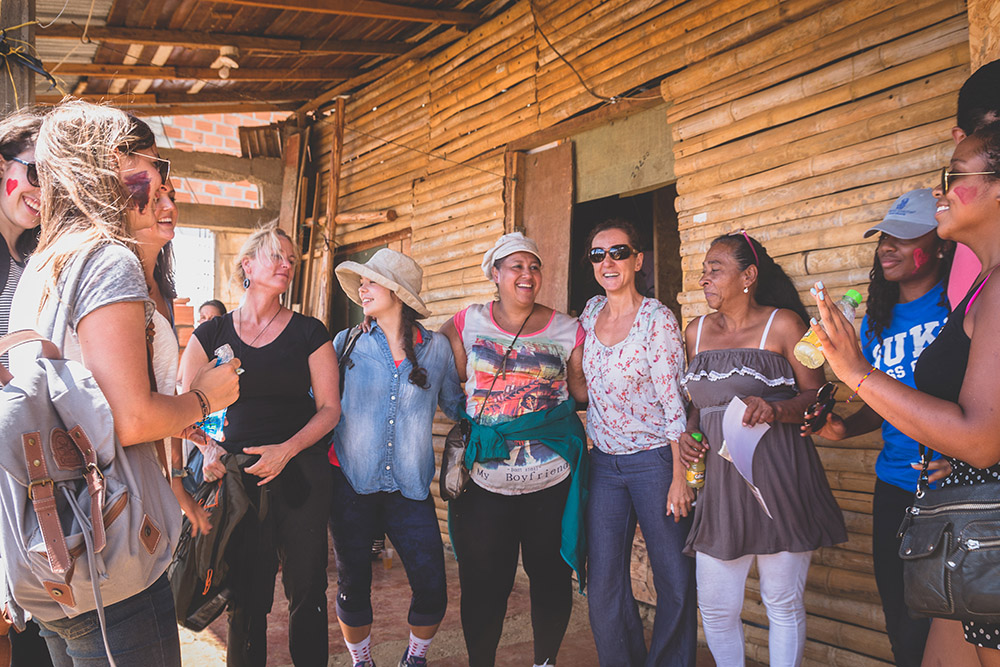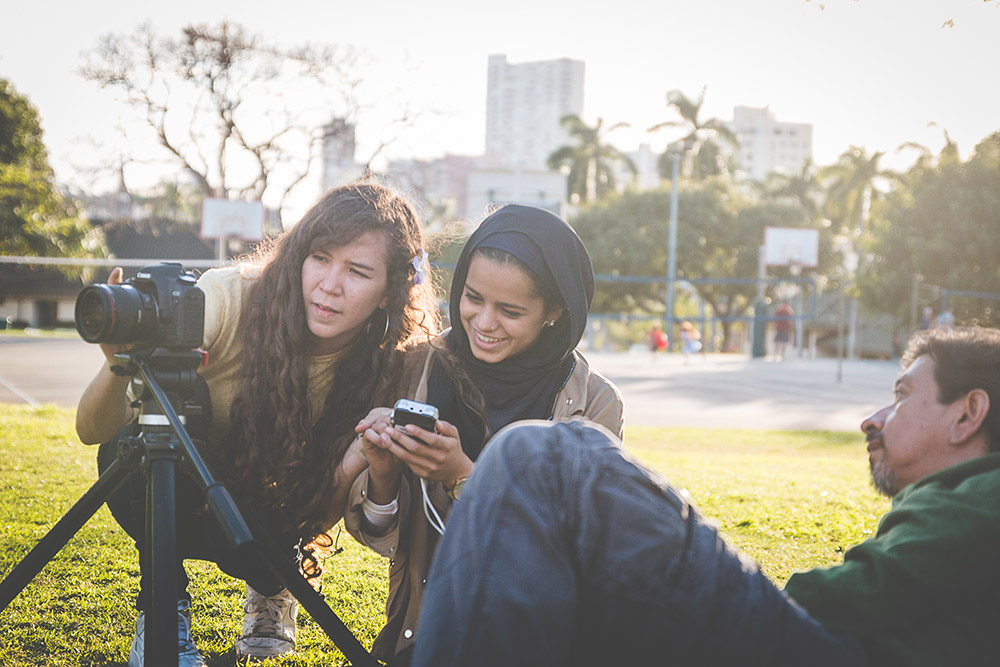Videos from 2017
Click here to see more.
More details about Global Pathways: Colombia
The 4-credit course will be taught by Tamera Marko, Ph.D., the Global Pathways: Colombia director and Senior Lecturer in Emerson’s Department of Writing, Literature, and Publishing, and Luis Serna, a filmmaker, professor, and director of the art programs at the Universidad Nacional de Colombia in Medellín. This course focuses specifically on multimedia storytelling—including video, photo, and written word—for diverse audiences in Colombia and in the United States. We focus on thinking about who gets to tell what stories—and why, how, where, and for whom they are circulated. We do so in Spanish and in English, which means learning to negotiate not only languages, but also cultures. A list of required readings, which will all be available online, and other recommended texts will be sent prior to the program.

Participants will also be paired with art and architecture students from the Universidad Nacional de Colombia's Medellín campus, many of whom are from families who were displaced, to document their multimedia work and the historical and social contexts that inspire them. In the course, we will focus on crafting videos, photos, biography statements, grant proposals, project statements, and academic abstracts for publications and exhibitions. Their art and architecture projects include multimedia research, analysis, and proposals for solutions to some of the 21st century’s most important local and global crises, including water scarcity, women’s rights, land rights, building community and equitable inclusion through the arts and theater, the homogenization of the aesthetics of public space, sustainable public transportation, and traditional farming.

Each student will live with a homestay family, eating most of their meals at home and going to family events. Participants will also be matched with compañeras/os (friends), Colombian university students who want to show them around the city and share what it's like to be a young adult in Medellín. All of the families live in the same lush green neighborhood, along with the program director and site coordinator.
This neighborhood was built 50 years ago to provide teachers, students, social workers, and artists with affordable housing that’s within walking distance of the Universidad Nacional de Colombia, the city’s public transportation system, and cultural spaces. Many of the current residents, now grandparents, planted the original tropical trees and gardens. Today, this neighborhood is a thriving intergenerational residential space with homestyle restaurants that serve traditional Colombian food, a bookstore, a public library with one of the best photographic archives in Colombia, cafes, and two art spaces. It is a bustling and safe hangout for university youth and faculty in the evenings and on the weekends, when the city of Medellín often hosts free cultural events.
Students will tour art museums and other cultural centers around the city, and get to see some of Medellín’s most important cultural events. This includes the annual Flower Festival (Feria de las Flores), which immerses the city in beautiful, elaborate flower arrangements and designs by farmers around the region, honoring the Medellín’s heritage and bringing light to its official nickname, city of the eternal spring.

Students will also learn about and visit many of the urban projects that have won Medellín national and international awards—and serve as models for more inclusive and sustainable urban planning for other cities in the Americas. These projects include hospitals, community centers, library parks, public gardens, and public transportation systems. These excursions last no more than a day, as students always sleep in their homestay families’ homes.
If you have any questions or concerns about any aspect of the program, don’t hesitate to contact program director Tamera Marko (tamera_marko@emerson.edu) or site coordinator Ryan Catalani (ryan@mobilitymovilidad.org).
Dates
Application deadline: January 31, 2018
Program: July 14 - August 11, 2018
Contact the directors
Tamera Marko
tamera_marko@emerson.edu
Ryan Catalani
ryan@mobilitymovilidad.org
Eligibility
This program is open to rising sophomores, juniors, and seniors of all majors. Students should have taken one 200-level LI course or have fulfilled their literary perspective. Students should also be able to communicate in basic Spanish.
Costs
The program fee paid to Emerson is estimated at $3,600 (subject to change). This includes the costs of tuition and housing. Financial assistance may be available for early applicants.
We estimate students will need an additional $1,000 to pay for airfare, transportation in the city, meals outside of the homestay family, supplies, and a passport if necessary. Students will pay for these costs directly, but the program director and site coordinator will work with accepted students to coordinate flights and budget the additional expenses, including advising on fundraising.
The additional costs will vary depending on the exchange rate of the Colombian peso. In the last year, one US dollar ($1) has been worth between about 2,300 and 3,300 Colombian pesos. That is, a typical lunch that costs 13,000 pesos might be equivalent to something between $3.93 and $5.65.
Other Requirements
US citizens do need not need a visa to travel to Colombia for this program; this will vary for citizens of other countries.
Participants in the Colombia Program must have an insurance plan that provides coverage while in Colombia. If you have the EC Aetna Student Health Plan you are covered in Colombia (as required) for participation in the program. If you feel your current insurance is not adequate, please research a plan that is. View the Health Insurance Requirements section.